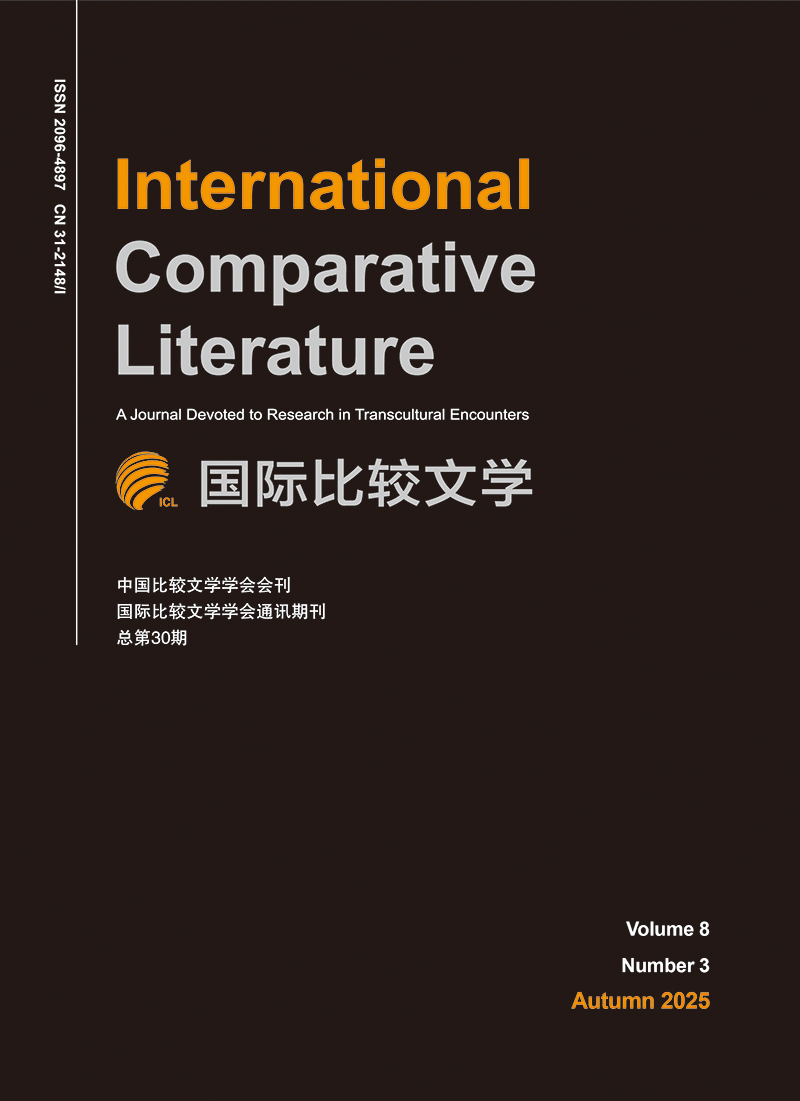|
[1]
|
Jakobson,Roman.Selected Writings,Volume V:On Verse,Its Masters and Explorers.The Hague:Mouton Publishers,1979.
|
|
[2]
|
Kao,Yu-Kung and Tsu-Lin Mei. "Meaning,Metaphor,and Allusion in T'ang Poetry." Harvard Journal of Asiatic Studies 38,no.2(1978):281-356.
|
|
[3]
|
Kao,Yu-kung. "The Aesthetics of Regulated Verse." In The Vitality of the Lyric Voice.Edited by Shuen-fu Lin and Stephen Owen,332-85.Princeton:Princeton University Press,1986.
|
|
[4]
|
Mair,Victor Henry and Tsu-Lin Mei. "The Sanskrit Origins of Recent Style Prosody." Harvard Journal of Asiatic Studies 51,no.2(1991):375-470.
|
|
[5]
|
Martel,Francois. "Reconstruction d'un modèle prosodique chinois." Poetics 4,no.13(1975):29-45.
|
|
[6]
|
Preminger,A.and T.V.F.Brogan.The New Princeton Encyclopedia of Poetry and Poetics.Princeton:Princeton University Press,1993.
|
|
[7]
|
YANG Chen-Ning.Elementary Particles.Princeton:Princeton University Press,1962.
|
|
[8]
|
曹旭:《诗品笺注》,人民文学出版社,2009年。[CAO Xu.Shipin jian zhu(A Note on Ranking of Poets).Beijing:People's Literature Publishing House,2009.]
|
|
[9]
|
傅浩:《<阿摩卢百咏>诗体格律简介》,见《阿摩卢百咏》,傅浩译,上海:中西书局,2016年。[FU Hao. "Amolu bai yong shiti ge lüjianjie" (An Introduction to the Prosodies of One Hundred Poems of Amaru).In Amolu bai yong(One Hundred Poems of Amaru).Translated by FU Hao.Beijing:Zhongxi Publishing House,2016.]
|
|
[10]
|
(清)杭辛斋:《杭氏易学七种》(上册),北京:九州出版社,2005年。[HANG Xinzhai.Hangshi Yixue qi zhong(Seven Books of Hang's Research on Yijing).Vol.1.Beijing:Jiuzhou Press,2005.]
|
|
[11]
|
(明)黄佐:《六艺流别》,第5卷,王云五编:《景印岫庐现藏罕传善本丛刊》,台北:台湾商务印书馆,1973年。[HUANG Zuo.Liuyi liubie(The Differences and Branches of Six Arts).Vol.5.In Jingyinxiulu xiancang hanchuan shanben congkan(The Rare Collections of Jingyinxiu Studio).Edited by WANG Yunwu.Taipei:The Commercial Press,1973.]
|
|
[12]
|
(唐)孔颖达:《周易正义》,北京:北京大学出版社,1999年。[KONG Yingda.Zhouyi Zhengyi(The Rectifications of Meanings of Yijing).Beijing:Peking University Press,1999.]
|
|
[13]
|
(明)来知德:《周易集注》(上册),北京:九州出版社,2004年。[LAI Zhide.Zhouyi jizhu(Collected Annotations on Yijing).Vol.1.Beijing:Jiuzhou Press,2004.]
|
|
[14]
|
卢盛江:《文镜秘府论汇校汇考》,北京:中华书局,2015年。[LU Shengjiang.Wenjing mifu lun huijiao huikao(Collected Studies of Literary Mirror and Secret Palace).Beijing:Zhonghua Book Company,2015.]
|
|
[15]
|
——:《四声发现与佛经转读关系的再考察》,《社会科学战线》,9(2015):131-148.[——. "Sisheng faxian yu fojing zhuandu guanxi de zai kaocha" (An Investigation of the Correlation between Discovering the Four Tones and the Buddhist Recitation).Shehui kexue zhanxian(Social Sciences Front) 9(2015):131-48.]
|
|
[16]
|
饶宗颐:《饶宗颐二十世纪学术文集》,第11卷,北京:中国人民大学出版社,2009年。[RAO Zongyi.Rao Zongyi ershi shiji xueshu wenji(20th Century Academic Works of Rao Zongyi).Beijing:China Renmin University Press,2009.]
|
|
[17]
|
(巴、美)爱德华·W.萨义德:《东方学》,王宇根译,北京:三联书店,2019年。[Said,Edward W.Dongfangxue(Orientalism).Translated by Wang Yugen.Beijing:SDX Joint Publishing Company,2019.]
|
|
[18]
|
(日)高木正一:《六朝律诗之形成》,郑清茂译,《文学·下》,台北:大陆杂志社,1968年,66-76。[SHOICHI,Takagi. "Liuchao lüshi zhi xingcheng" (The Birth of Regulated Verse in The Six Dynasties).Translated by ZHENG Qingmao.In Literature.Vol.2,66-76.Taipei:The Continental Press,1968.]
|
|
[19]
|
(清)王楷苏:《骚坛八略》,洪洞:钓鳌山房,1797年。[WANG Kaisu.Sao tan ba lüe(The Eight Strategies of Poetic Arena).Hongdong:Turtle-Fishing House,1797.]
|
|
[20]
|
王力:《汉语诗律学》,上海:上海教育出版社,2005年。[WANG Li.Hanyu shilüxue(Chinese Versification).Shanghai:Shanghai Educational Publishing House,2005.]
|
|
[21]
|
朱伯昆:《易学哲学史》(第3卷),台北:蓝灯文化事业公司,1991年。[ZHU Bokun.Yixue zhexue shi(A Philosophical History of Yijing Studies).Vol.3.Taipei:Blue Lantern Cultural Enterprise Company,1991.]
|

 点击查看大图
点击查看大图



 下载:
下载:

